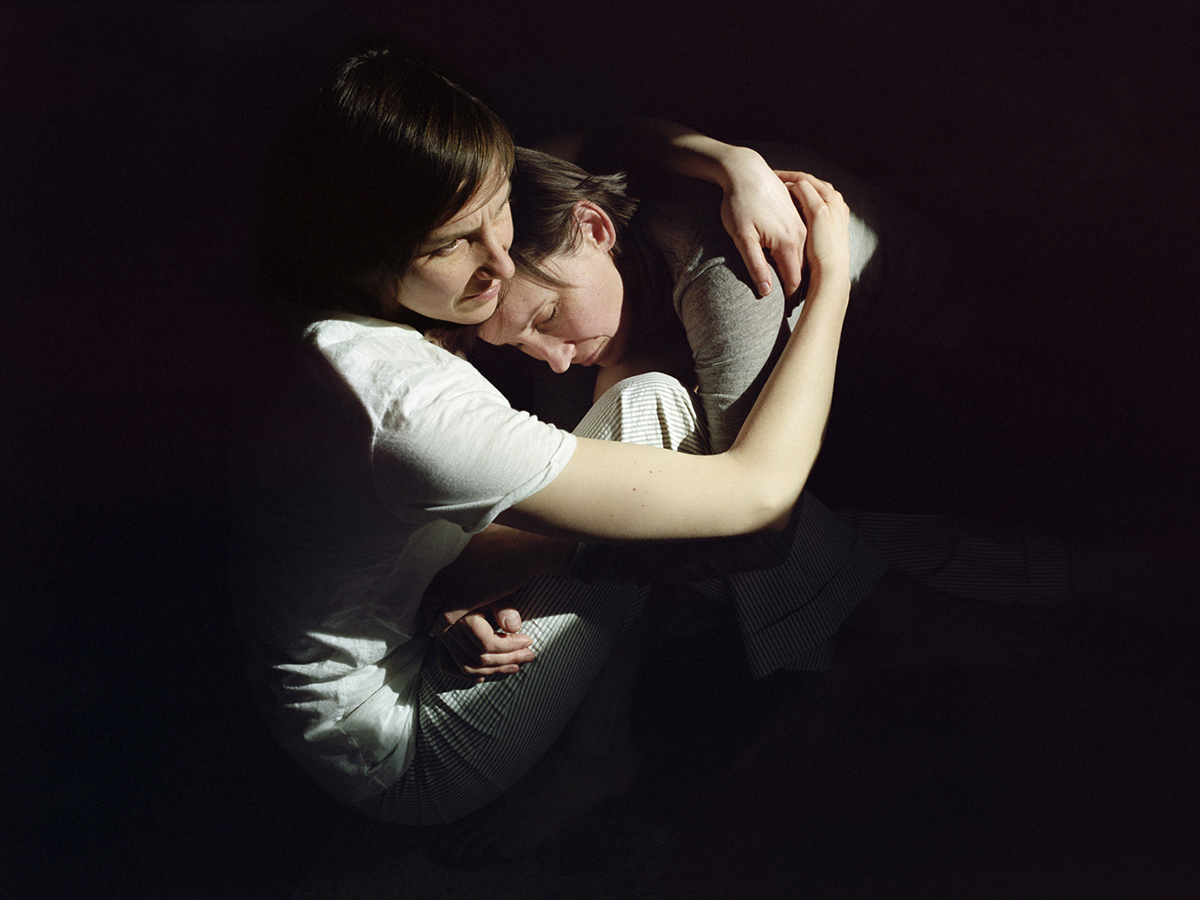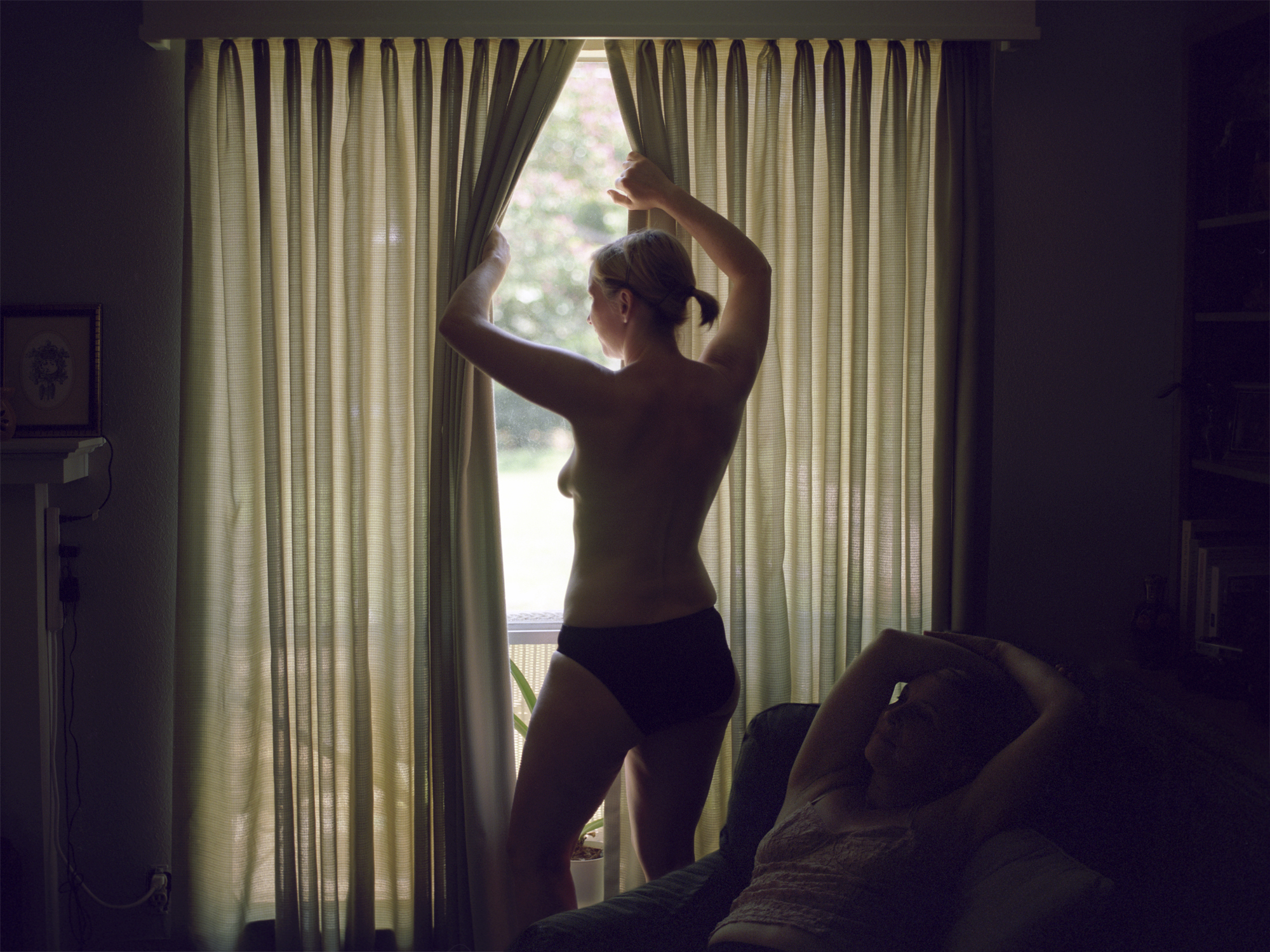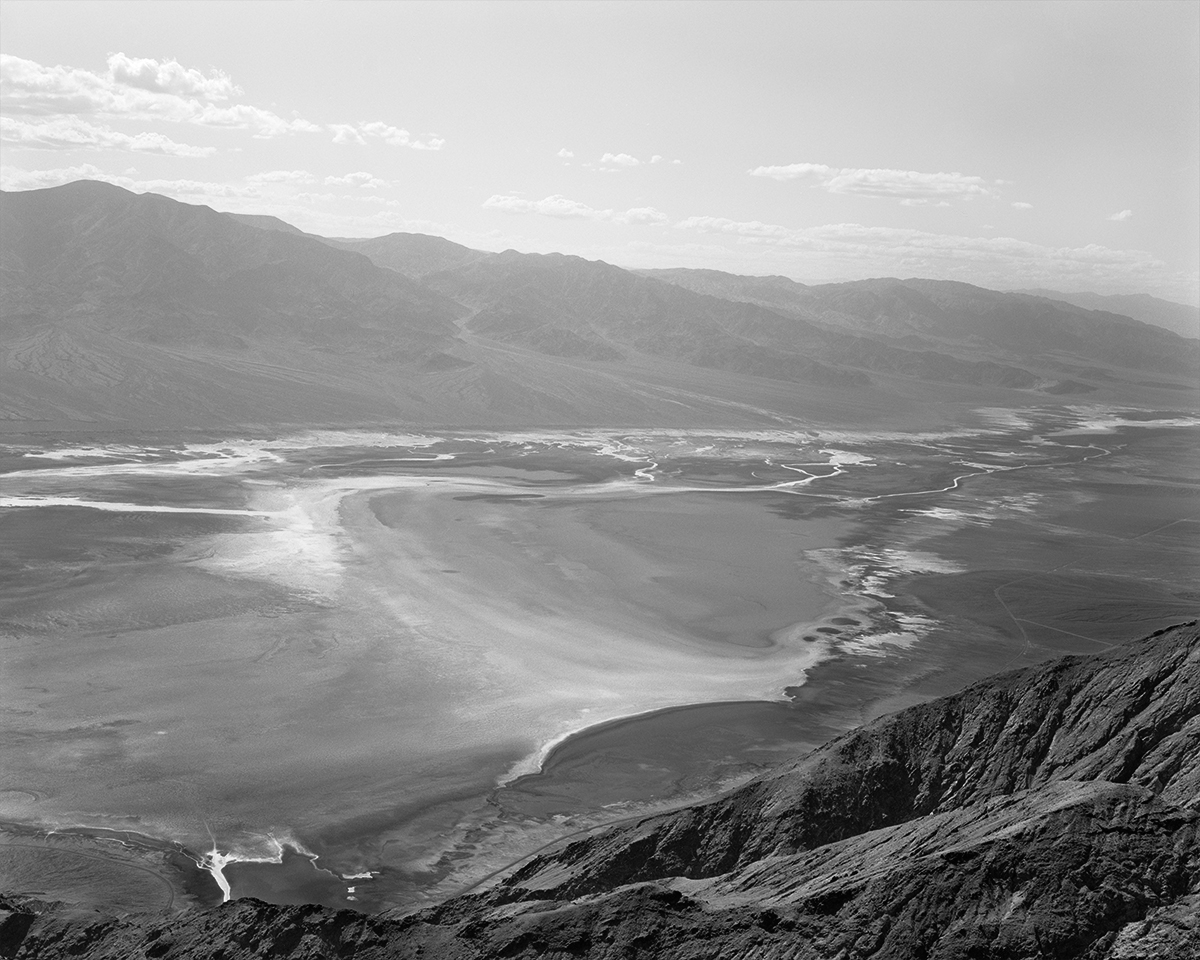Q&A: kelli connell
By Jess T. Dugan | January 4, 2018
Kelli Connell’s work has been widely received and included in numerous solo and group exhibitions. Her work is in the collections of The Metropolitan Museum of Art, Los Angeles County Museum of Art, Columbus Museum of Art, Museum of Fine Arts Houston, Museum of Contemporary Photography, Microsoft, Haggerty Museum of Art, Philadelphia Museum of Art and The Dallas Museum of Art. Connell’s first full length monograph entitled Kelli Connell: Double Life was released by DECODE Books in August, 2011. Other publications include MP3: Midwest Photographersʼ Publication Project (Aperture: New York and Museum of Contemporary Photography: Chicago, 2006), Vitamin Ph: New Perspectives in Photography (Phaidon Press: London, 2006), Photo Art: The New World of Photography (Aperture: New York, 2008), and Auto Focus: The Self-Portrait in Contemporary Photography (The Monacelli Press: New York, 2010). Her work has been showcased in Adbusters, American Photo Magazine, Art in America, ARTnews, Camerawork: A Journal of Photographic Arts, DIVA Magazine, EXIT Express, Foam Magazine, Gente di Fotografia, Girls Like Us, The New York Blade, and The New York Times.
Around Here from Double Life
Jess T. Dugan: Hi Kelli! Thanks so much for taking the time to speak with me. Let’s start at the beginning. What was your path towards art-making, and at what point did you decide to focus on photography specifically?
Kelli Connell: Hey Jess! It's great to be talking with you. I wasn't exposed to art that much as a kid growing up in West Texas. Neither of my parents were artists, and it wasn't until I was in high school that I took my first photography class. I was hooked immediately! But, unlike other students in my class, I was drawn to directing scenes and not to documenting my surroundings.
It wasn't until college that I understood that I wanted be an artist. One summer I spent countless hours taking breaks from the Texas heat by laying on the floor of my friend’s apartment as we poured over piles of photography books. In truth, I had quite a crush on my friend and my secret longing seemed to flow from the space between us as we devoured photographs by Larry Sultan, William Eggleston, Diane Arbus, Lee Friedlander and Francesca Woodman. Interrogating these images, really spending time thinking about why each artist photographed what they did, made me interested shaping my own vision through photographs.
Sunroom from Double Life
JTD: Your ongoing series Double Life has been exhibited and written about rather extensively, but for the sake of readers who might be unfamiliar, tell me about this series, how it began, and how it is progressing.
KC: I began making photographs for Double Life at a time when I was newly single after the relationship I had been in for more than five years had come to an end. I was questioning my sexuality and the roles that I had played in past relationships. I became interested in investigating the roles that we assume in relationships and society's collective effect on these roles. I found that by casting the same model to play both characters in a relationship, or two separate ‘selves’, I was able to raise questions about the roles that we assume in regards to gender, sexuality and identity. By making these photographs, I was able to express the self-questioning that was going on in my real life. I was seduced by the power of the photograph to raise questions, all the while appearing to be a document of truth. For me, photography has been the perfect medium to explore these ideas.
Over the years, the project has shifted based on what I have had to say about relationships. As my model and I have aged, our priorities and the ways we construct our identities have changed. And in this particular time, I feel it is important to have representations of older women valued in the art world.
Dark Hour from Double Life
JTD: You have mentioned in artist talks that you faced pushback from the larger art community for working on Double Life for such a long period of time (15 years thus far), and also for continuing to photograph a woman as she ages. How have you navigated this resistance? Has it strengthened or altered your motivations for continuing to work on Double Life in any way?
KC: I think there is a lot of pressure in the art world to make a new body of work every two or three years. For a while I felt pressure, whether self-imposed or otherwise, to complete Double Life. But I kept having ideas for images and Kiba, my model, and I still enjoyed working together. Seeing the inequalities of representation in the art world has only motivated me to continue the work.
Sliding Doors from Double Life
What I have had to say about relationships, the self, or a woman's body is very different now that I am in my forties, and I can only imagine that this will continue to evolve. It is important that our definitions about women, their sexuality and identity do not get more narrow as they get older. Uncovering the desires of older women is something that needs to be represented more in the art world.
Melanie's Place from Double Life
JTD: Tell me about your newest project, Pictures for Charis, focusing on your wife, Betsy. I understand it is fairly research-based, pulling from the archive of Edward Weston, particularly images of his wife Charis. What was the impetus for beginning this project and what is your process for making it?
KC: I have always been interested in photographer-to-sitter relationships. A few years ago, I began to research the work of other photographers who had photographed their partners over long periods of time, such as Alfred Stieglitz and Georgia O’Keeffe, Seiichi Furuya and Christine Goslar and eventually Edward Weston and Charis Wilson. Once I learned that Charis was a writer and as interested in being in Edward’s photographs as my model, Kiba, was as interested in being in my work, I was immediately enamored with her and her agency as a model and artist in her own respect. I guess I felt a kinship with Charis. Anyway, I began to research and read as much as I could about Charis. I read her autobiography and traveled to the Center for Creative Photography in Tucson where I had access to primary sources of her writing. I decided to try to tell more of her story by visiting the places where she and Edward had lived and spent time together from 1934 to 1945. I learned how to use a 4 x 5 camera that I could fit in a backpack and set out with my wife Betsy to photograph across California. We have made medium and large-format photographs in Death Valley, some from the same vantage point where Edward stood in awe at Dante’s View; hiked to Lake Ediza in the Sierra Nevada to try to find the exact piece of granite that Charis laid against in Edward’s photograph entitled Charis, Lake Ediza, 1937; and photographed at Lake Tenaya where I had the eerie feeling that I was standing in the exact spot as Edward while he photographed a magnificent pair of junipers, Charis off-camera, but by his side. I have photographed Betsy as Charis and Betsy as herself. She has been directed by me and photographed candidly in between shoots.
Dante's View from Pictures for Charis
JTD: The project has a written component in addition to the photographs. What is the focus of the writing and how do you anticipate integrating it with the photographs?
KC: Early on I knew that I would need a written component for this work. There was no way that a photograph could tell the story of Betsy and me and of Charis and Edward to its fullest. The text combines photographic criticism, autobiography and non-fiction in order to weave together Charis and Edward’s story with that of Betsy and myself as we travel throughout California retracing Edward and Charis’s footsteps. Pictures for Charis explores the periphery, as Betsy and I experience the scenes and places that were directly outside of Weston's frames.
From the beginning, I saw this project as a book. I will either integrate the images within the text, like W. G. Sebold’s approach in Rings of Saturn, or I will use California and the West as a starting point which alternates between full chapters of Charis's writing and suites of photographs made by Edward.
Betsy, Lake Ediza from Pictures for Charis
JTD: As you mentioned, the history of photography is full of iconic examples of male photographers photographing their wives, Edward Weston of course being a prominent example among many others. In Pictures for Charis, to what extent are you consciously attempting to queer this conventional genre of portraiture? And to what extent is your investigation based primarily on your own personal interest and relationship?
KC: I feel that as a queer woman it is interesting and important for me to participate in that tradition of photographing your partner, of revealing the beauty of a subject you love while balancing the intimacy of the portrait. I have always had a problem with the way we put people in boxes—I think of Edward, with his reputation for philandry and perpetuating the male gaze. During the time he was with Charis, he was not the photographer who has been so easily pinned down as a womanizer. Learning about Edward through Charis, I discovered that he was much more complex and nuanced than how he had been portrayed through my experience of the history of photography. So, Charis helped widen my view of him as well.
Our Shirts, Lake Ediza from Pictures for Charis
JTD: It is a particularly intimate endeavor to make work with someone so close to you, especially your spouse. What has your experience been making photographs of Betsy? Would you say your process is collaborative, and if so, to what extent?
KC: Making photographs with Betsy is different than making photographs with Kiba. Because Kiba and I live in separate states, and our relationship is primarily a working relationship, we always get excited to make photographs together for Double Life. Essentially, we can stay in a creative environment, one where fiction and choreography lead, the entire time we're together. Our personal lives do not bubble up and get in the way; we are suspended from them. Working with Betsy is more difficult because whatever may be going on in our relationship, whether it is exciting, or boring, or challenging, can sometimes interrupt the flow of picture taking. I am truly indebted to Betsy for the countless miles of terrain we have traversed looking for a pair of ghosts who are no longer there, all the while being instructed to stop on a dime and let me take her portrait when I see fit. This project has made me understand that behind most great works of art lies the sacrifices and support of someone who loves them.
Preston from Pictures for Charis
JTD: I love that notion, and I think it is something not often fully recognized. How do you envision this project in its final form? A book, exhibition, or something else entirely?
KC: I see this project in multiple forms. It will be a book, but I am also interested in working with museums that have Edward Weston photographs made from 1934 to 1935 in their collections. It would be fantastic to have an exhibition in tandem with a display of his works so that the work could be in conversation almost 80 years since he and Charis made work together.
JTD: That would be fantastic! What is on the horizon for you as an artist?
This winter and spring I plan on finishing a book dummy for Pictures for Charis and finding a publisher for the work. I will be an Artist-in-Residence at PLAYA this summer and I am looking forward to having concentrated time to finish this body of work. It is my hope to have several exhibitions and a book of Pictures for Charis published in the near future.
JTD: I can’t wait to see it! Thanks so much for talking with me, Kelli!
Rock Bottom from Pictures for Charis









